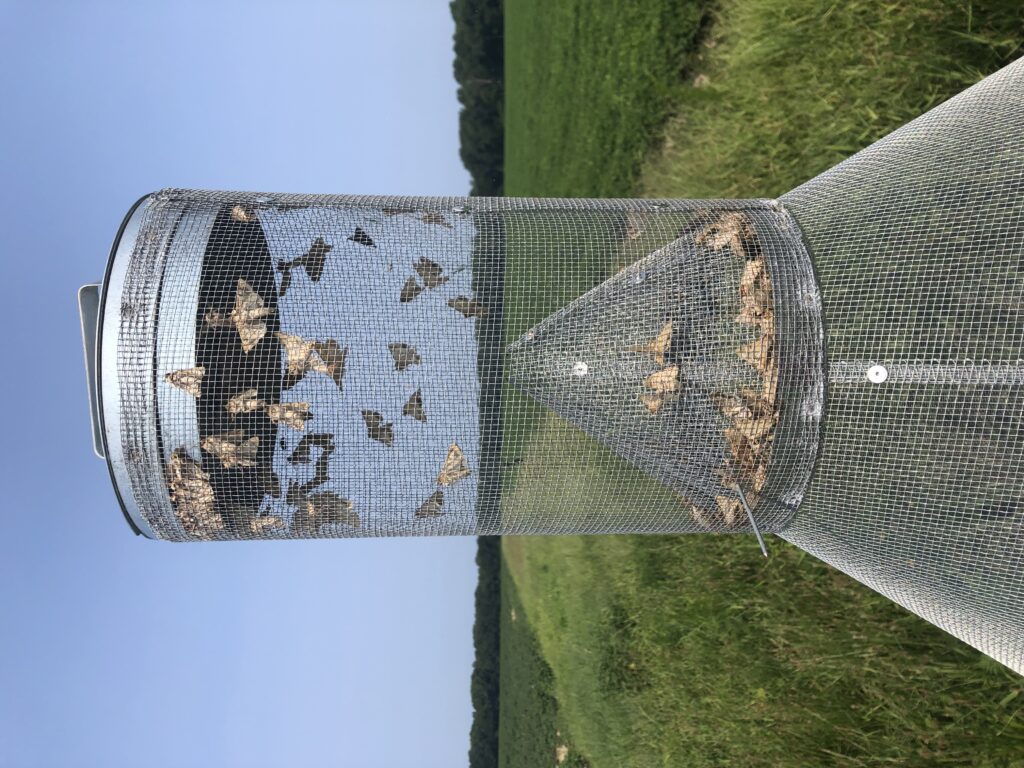Corn Earworm / Bollworm Flight Has Started
go.ncsu.edu/readext?812127
en Español / em Português
El inglés es el idioma de control de esta página. En la medida en que haya algún conflicto entre la traducción al inglés y la traducción, el inglés prevalece.
Al hacer clic en el enlace de traducción se activa un servicio de traducción gratuito para convertir la página al español. Al igual que con cualquier traducción por Internet, la conversión no es sensible al contexto y puede que no traduzca el texto en su significado original. NC State Extension no garantiza la exactitud del texto traducido. Por favor, tenga en cuenta que algunas aplicaciones y/o servicios pueden no funcionar como se espera cuando se traducen.
Português
Inglês é o idioma de controle desta página. Na medida que haja algum conflito entre o texto original em Inglês e a tradução, o Inglês prevalece.
Ao clicar no link de tradução, um serviço gratuito de tradução será ativado para converter a página para o Português. Como em qualquer tradução pela internet, a conversão não é sensivel ao contexto e pode não ocorrer a tradução para o significado orginal. O serviço de Extensão da Carolina do Norte (NC State Extension) não garante a exatidão do texto traduzido. Por favor, observe que algumas funções ou serviços podem não funcionar como esperado após a tradução.
English
English is the controlling language of this page. To the extent there is any conflict between the English text and the translation, English controls.
Clicking on the translation link activates a free translation service to convert the page to Spanish. As with any Internet translation, the conversion is not context-sensitive and may not translate the text to its original meaning. NC State Extension does not guarantee the accuracy of the translated text. Please note that some applications and/or services may not function as expected when translated.
Collapse ▲It is time to start scouting cotton and soybeans for corn earworm also known as bollworm.
On Monday (7/26/21), we deployed 20 pheromone traps across 5 eastern counties to monitor corn earworm. When checking traps today (7/29/21), we counted a large number of moths in traps network located in Edgecombe, Halifax, Nash, and Wilson counties (up to 50-60 corn earworm moths per day).
Given the numbers observed in traps over the first 3 days of trapping, we could be in for a moderate to large flight this year.
Low numbers of corn earworm eggs were detected while scouting cotton and soybean fields adjacent to traps. Corn earworm eggs were also found in soybean at the Upper Coastal Plain Research Station located near Rocky Mount, North Carolina. Crop consultants reported significant egg laying in cotton in southeastern counties.
Proactive scouting for eggs and larvae will be an important step to head off crop damage in 2021.
We thank growers, county Extension personnel, and the NC Soybean Producers Association for supporting the pheromone and black light networks.
Several scouting resources are available through the NC State Extension portals for cotton and soybean:
Soybean scouting and thresholds
Cotton scouting recommendations and thresholds for 2021




